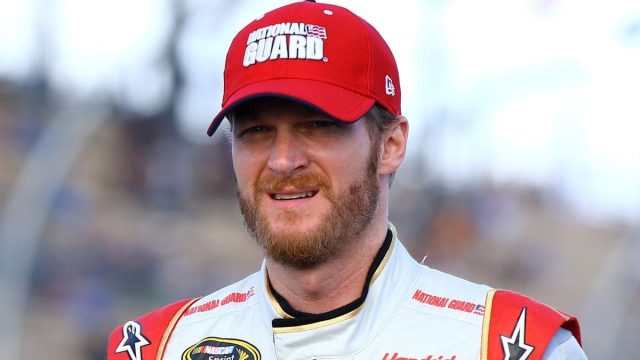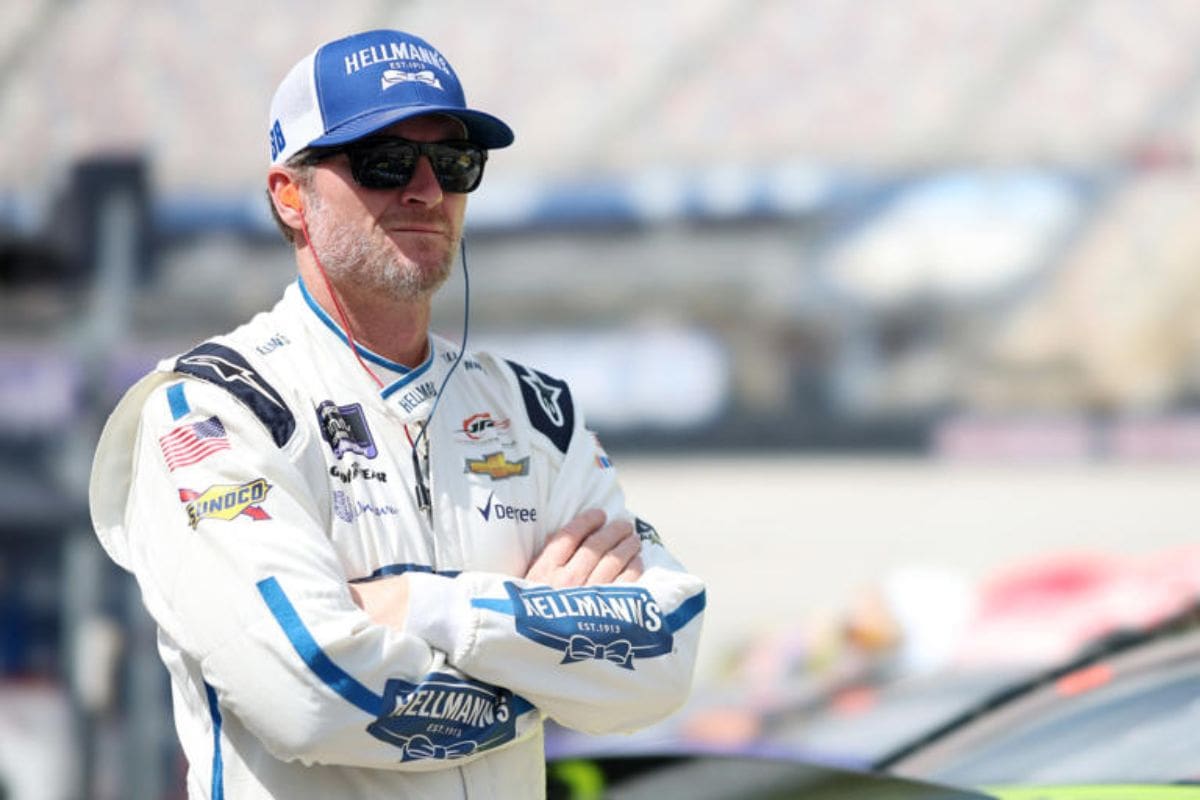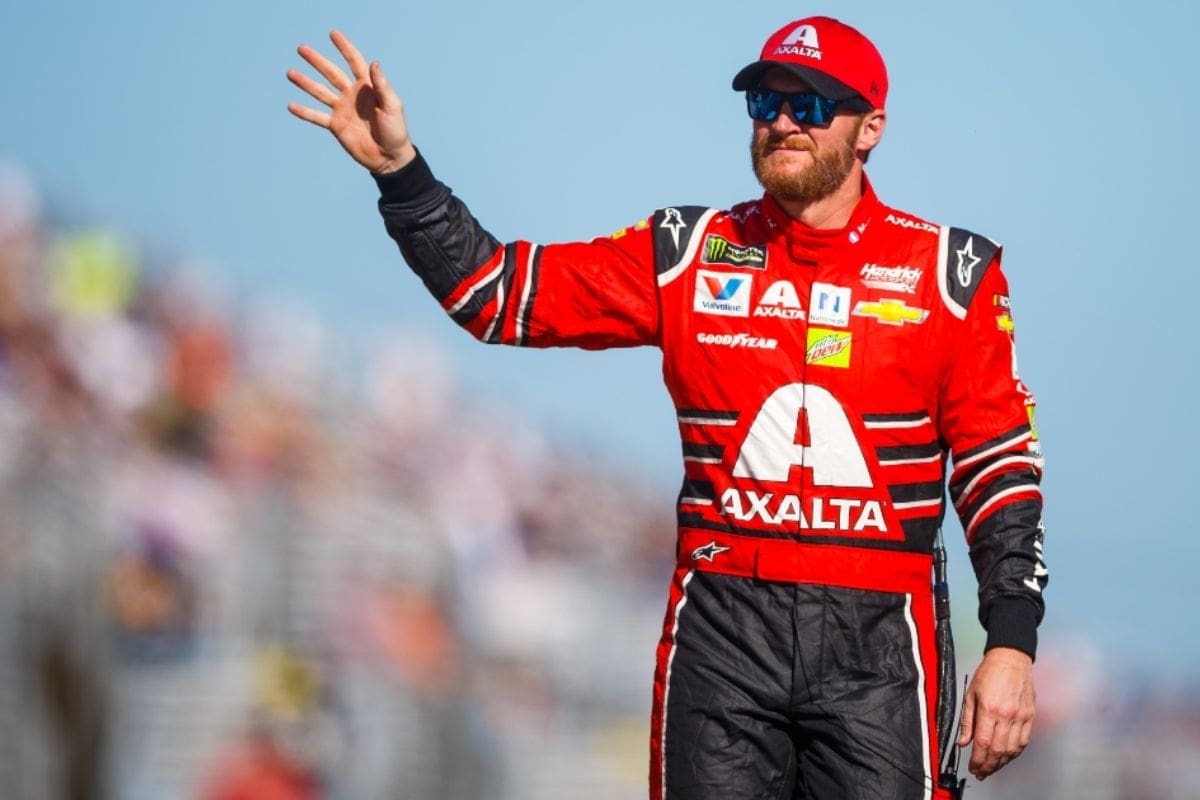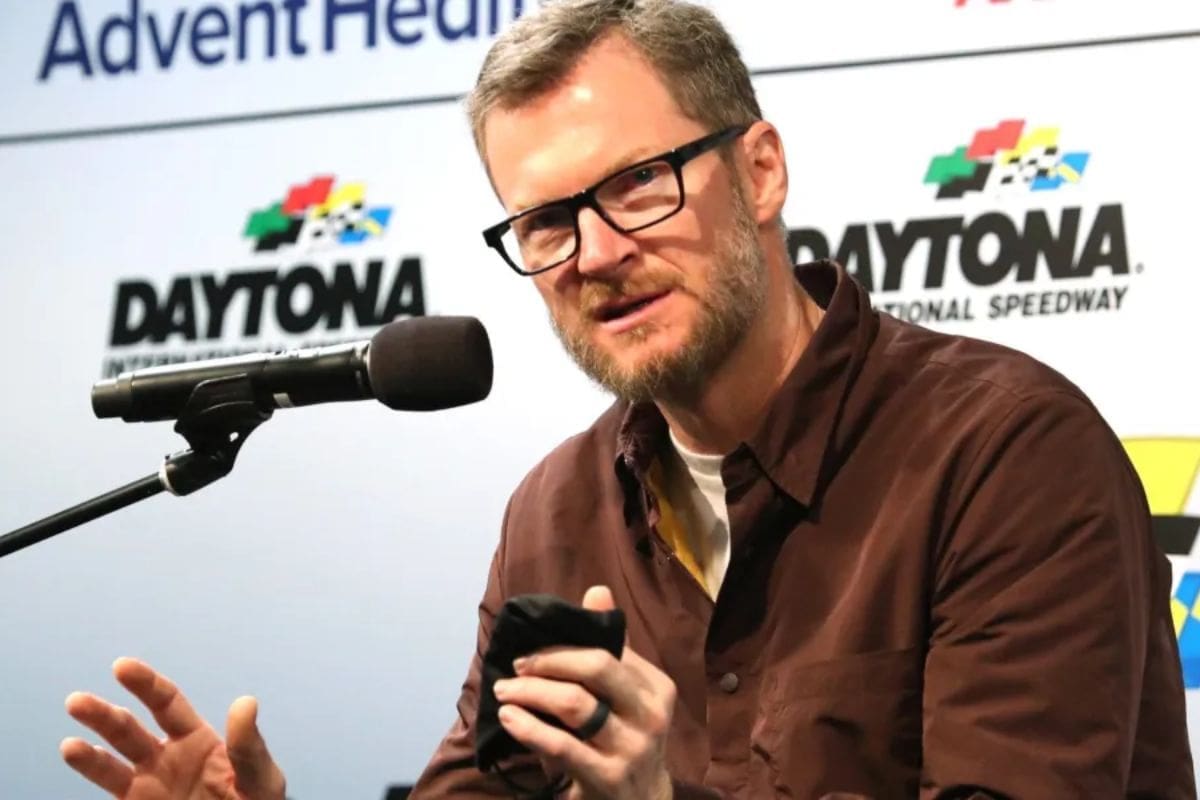Dale Jr and NASCAR’s Controversy on Brickyard Penalties: Dale Earnhardt Jr. has raised considerable concerns regarding NASCAR’s recent penalties against Chase Elliott and Brad Keselowski, emphasizing the implications of enforcing rules that may not account for the complexities of real-time racing decisions. His critique centers on the blend line violation during the Brickyard 400, questioning whether strict adherence to regulations reduces the very essence of competitive racing. Earnhardt Jr.’s call for consistency and transparency in rule enforcement prompts a broader examination of how such penalties could affect drivers’ trust and the sport’s integrity as a whole.
Key Highlights
- Dale Earnhardt Jr. criticized NASCAR for imposing harsh penalties on Chase Elliott and Brad Keselowski for a blend line violation during the Brickyard 400.
- He highlighted the need for understanding race dynamics and the split-second decisions drivers face during competitions.
- Earnhardt Jr. called for transparent and consistent rule enforcement to preserve the integrity and competitive spirit of NASCAR.
- The recent penalties raised concerns over fairness, as they contradicted accepted practices and previous leniency regarding blend line navigation.
Dale Earnhardt Jr.’s Criticism of NASCAR’s Penalty
Dale Earnhardt Jr. expressed strong disapproval of NASCAR’s recent penalties imposed on Chase Elliott and Brad Keselowski, arguing that the decision failed to take into account the intricacies of the situation. His critique centers on the enforcement of the rules regarding the blend line violation during Brickyard 400, where both drivers were penalized, affecting their competitive standings. Earnhardt Jr. emphasizes that NASCAR’s approach lacked a thorough understanding of the race dynamics and the critical nature of split-second decisions made by drivers in intense environments.
In his analysis, Earnhardt Jr. highlights the importance of context in such rulings. He believes that the penalties disregarded the unique circumstances that led to the incident, potentially reducing the integrity of the sport. By failing to regard the subtleties of racing incidents, NASCAR risks alienating the fans and competitors, who rely on a fair and informed adjudication process.
Moreover, Earnhardt Jr. calls for a more transparent and consistent application of rules, suggesting that the governing body should aim to maintain the sport’s competitive spirit while ensuring that penalties reflect an understanding of the complexities involved in racing. This incident shows a broader issue within NASCAR regarding the balance between strict rule enforcement and the inherent unpredictability of the sport.
“There were a couple of things that, if I wanted to criticize NASCAR, there were a couple of penalties, and I think Brad and Chase Elliott received these penalties.” – (dale jr.)
Earnhardt Jr. Describes the Blend Line Violation
In his critique, Earnhardt Jr. elaborates on the specifics of the blend line violation, explaining the common practice among drivers to drive the exit lane from pit road into the racing surface. He emphasizes that when exiting pit road, drivers shift onto a runoff lane, a designated strip of asphalt that connects to the racing surface between Turns 1 and 2. This area is vital for drivers to rejoin the race effectively, allowing them to gain speed as they merge back onto the track.
Earnhardt Jr. notes that many drivers typically swing wide, crossing the white lines that delineate the runoff lane, to optimize their angle of attack through this significant section. This technique is not only common but is also fundamental for achieving maximum acceleration down the back straightaway. He points out that while some drivers are more aggressive in their approach, this tactic has historically not drawn scrutiny or debate.
The former driver suggests that the penalties imposed on Chase Elliott and Brad Keselowski for such actions seem disproportionate, given the routine nature of the blend line violation. His analysis raises questions about the enforcement of these rules, particularly when such driving behaviors have long been accepted as part of competitive racing.
“So, when you exit pit road, you’re on the run-off lane. It’s this little strip of asphalt that’s separated from the race track. But right in between Turn 1 and Turn 2, it’s connected to the racing surface. A lot of drivers swing out, crossing a couple white lines, to get a good angle of attack on this run-off, this exit lane, through Turn 2, so they could accelerate down the back straightaway. So, this is a really common move. Very common. Some drivers are more aggressive than others, in terms of how far they swing out, but it’s never been a topic of conversation.” – (dale jr.)
NASCAR’s Previous Guidelines and Earnhardt Jr.’s Concerns
NASCAR’s previous guidelines regarding the blend line have created a sense of confusion among drivers and teams, particularly as Earnhardt Jr. expresses concerns over the recent enforcement of penalties that seem inconsistent with established practices at tracks like Indianapolis Motor Speedway.
Historically, NASCAR has allowed drivers some leeway in steering through the blend line, providing a vague framework that permits them to ‘swing out’ and come off the racing line without a designated boundary.
“I know that NASCAR gave them some content, some explanation, about what they expect the drivers and teams to do in this area before the race. It really says pretty much what we all knew, ‘You can swing out, you can come off line and get out there a little bit close to the race track.’ It did not designate any specific line, or anything that you couldn’t cross. … I’ve seen so many cars go where they went.” – (dale jr.)
Earnhardt Jr. highlights a significant inconsistency: the recent crackdown on this action contradicts what many drivers have long understood as permissible behavior on track. He notes that prior to the race, NASCAR provided limited clarification, repeating general expectations without specifying strict parameters.
This lack of clear delineation raises questions about the fairness and transparency of rule enforcement, particularly when penalties are applied selectively.
Dale Jr. Frustrated by NASCAR’s Inconsistent Rules
Frustration among drivers is mounting as Earnhardt Jr. articulates concerns over the recent inconsistency in penalties related to the blend line, highlighting a marked departure from previously accepted practices. He emphasizes that the actions taken against racers, particularly during critical moments in a race, seem arbitrary and poorly timed. Historically, driving around the blend line has not been heavily regulated, making this sudden enforcement problematic for drivers who have long relied on this technique to improve their racing strategy.
Earnhardt Jr. points out the dissonance in officiating, observing that while certain drivers faced penalties, others engaged in similar actions without repercussions. This inconsistency diminishes the fairness of the competition and leads to a sense of distrust among participants. He describes the scenario as “loosey-goosey,” indicative of a lack of clear standards and communication from NASCAR officials. The frustration is compounded by the perception that NASCAR is reluctant to acknowledge its errors, leaving drivers feeling powerless and unfairly penalized.
“Now, to pop a couple drivers in the middle of the race, when others, we know, are probably doing and are doing the same thing, it just felt loosey-goosey.” – (dale jr.)
The implications of inconsistent officiating extend beyond individual penalties; they affect the comprehensive integrity of the sport. Earnhardt Jr. emphasizes the need for a cohesive understanding among NASCAR officials about the rules and how they should be applied. With evolving dynamics and potential leadership changes, lapses in communication about racing protocols could worsen these issues.
“This is something that I had a little bit of a problem with. It’s never really been something that was heavily officiated before. This sort of swinging around wide, to better your angle of attack for Turn 2 on that lane, the access lane, has been a common, common thing, that drivers have done for a long time. I don’t believe that it’s ever been something that was strictly governed.” – (dale jr.)
Impact of Penalties on Brickyard 400
The recent penalties imposed during the race greatly influenced the outcomes for key drivers, particularly affecting their tactics and positioning on the track. Both Chase Elliott and Brad Keselowski faced penalties that not only disrupted their rhythm but also altered their approach to the race.
For Keselowski, despite being in a position to contend for victory, the penalties forced him to manage a challenging fuel strategy that ultimately hindered his chances. This inconsistency in penalty enforcement left both drivers grappling with an uphill battle, as they sought to regain lost ground.
Elliott’s ability to rebound from his penalty showed resilience; however, the initial setback undeniably dampened his performance and tactical options. The penalties highlighted a lack of clarity in NASCAR’s regulatory framework, which can lead to confusion among teams and fans similarly. Earnhardt Jr.’s criticism emphasizes a broader concern regarding the impact of such inconsistencies on competitive fairness.
“It’s not a great look. It’s frustrating, when you know you’re being black-flagged. There’s no way you’re going to talk your way out of this. NASCAR, rarely do they ever admit fault or a mistake, but you saw or you know that you’re not the only one doing this. You know that this has been a common thing that’s been done at this area. So, it’s been a few years since we’ve raced the over. A little bit of, maybe some turnover up in the booth. Different opinions about how things go, or should go, on the track. Some different perceptions. That’s the challenge. That’s the frustration, I think.” – (dale jr.)
News in Brief: Dale Jr and NASCAR’s Controversy on Brickyard Penalties
Dale Earnhardt Jr.’s critique of NASCAR’s penalties emphasizes a notable concern regarding the enforcement of rules in intense racing environments. The blend line violation, as pointed out, raises questions about the consistency and transparency of penalties.
Such inconsistencies not only affect competitive fairness but also threaten the integrity of the sport. A balanced approach to rule enforcement, considering the unique dynamics of racing, is crucial for maintaining trust among drivers and fans.
ALSO READ: Dale Earnhardt Jr. Reflects on Dale Earnhardt Sr.’s Resilience in Hard Times



